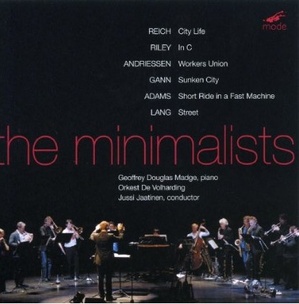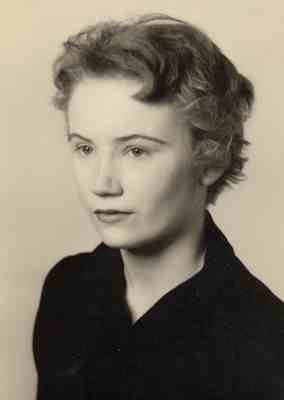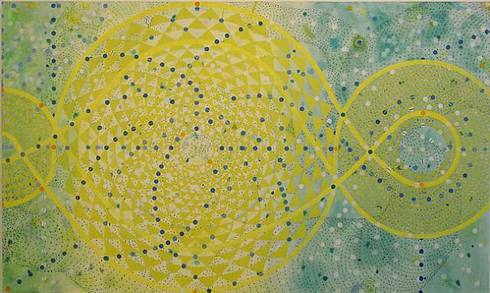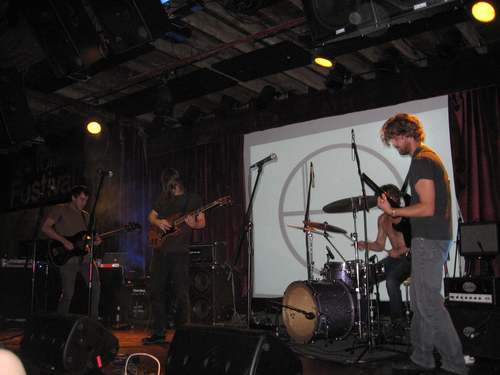Today we finished mixing and mastering the Relache ensemble’s compact disc of my suite The Planets. I also recently finished my new piece The Rite of Spring, and am hard at work on one called Scheherazade. From now on I’m only using titles that have been pre-tested for widespread audience appeal.
The Twelve Tones of Christmas
But I think instead I’m going to scale it back and make up a list of smaller pieces. I really don’t want to spend a lot of time on the Second Vienna School, who don’t interest me much – the payoff for me is all post-war Darmstadt – but I think with undergrads I probably should. I could teach one of the Webern Cantatas (I’ve grown deadly tired of dissecting the Symphony) and part of Berg’s Violin Concerto to start off, plus Dallapiccola’s Piccola Musica Notturna or Sex Carmina Alcaei. I can’t think what Schoenberg to teach, since I don’t like any of his 12-tone music except for Moses und Aron. Maybe I can suppress my gag reflex and do the Orchestra Variations or a movement from the Third Quartet. I do not want to waste my time teaching pieces I don’t like in this class. I’ve been analyzing Post-Partitions for years as a Babbitt example, and while it’s easy to outline, I just don’t think it’s a strong piece.
So I’m thinking All Set, for jazz ensemble, if there’s enough documentation about it in Andrew Mead’s book. I well know the folly of trying to analyze Babbitt without a cheat sheet. I regret that Mead doesn’t discuss The Widow’s Lament in the Springtime, which would be a perfect size. For another American, I’m thinking Rochberg’s lovely Serenata d’Estate, or possibly the first movement of his Second Symphony. For Stockhausen I wouldn’t mind trying my hand at Kontrapunkte, which I rather like. (I’m a little weary of rushing through Gruppen in alternate years.) I’d love to include Maderna, but the only score I have is Aura, which is too big. I don’t want to do early Boulez, Le Marteau included; the sonatas are too doctrinaire, and Marteau seems like more work than it’s worth. Ditto the Stockhausen Klavierstucke, with the possible exception of IX. Berio’s Sinfonia would be worth spending a few weeks with; that and Mantra could be the semester’s two major works. I’m also thinking about Berio’s Circles, a more manageable score. Ligeti’s Continuum is a good teaching piece, though I’d rather do something like Melodien or Monument-Selbstportrait-Bewegung. I’d love to do some later Nono, but I’m not inclined toward Il Canto Sospeso and even less to Polifonica-Monodia-Ritmica, which are the scores I own. I’ve always had a soft spot for Pousseur, but the only piece of his for which I own both score and recording is Jeu de Miroirs de Votre Faust, which is fun but hardly seems representative of serialism. The problem, as some of you know, is that some of these pieces contain complicated hidden structures, and don’t make much sense unless someone with inside information has written about them. I once had a frustrating experience trying to analyze Requiem Canticles in class, though I’ve since found enough information to want to try again. I shy away from Sessions for this reason, too – something about his row technique I don’t get.Â
What am I missing? What could I get and afford scores for, and find coherent analyses of?
UPDATE: Thanks to my readers for all your suggestions. I can now proceed feeling that I’ve left no stone unturned. Merry Christmas, happy Hannukah, have a good Kwanzaa or solstice, and all that jazz.
A Snapshot of Life Circa 2009
I’ve kept you too long in suspense about the upshot of Saturday night’s thingNY concert, which took place during a momentous blizzard that must have cut heavily into its audience. The evening consisted, not of pieces by all the composers on the program, but of just about everything the group got back in response to their mass e-mail, including a few “unsubscribe” messages, a Halloween greeting, some jpegs, a description of a piece submitted with way too large an instrumentation, some mp3s, and about half a dozen pieces, like mine, written for the occasion. It was a funny evening, the unsurprising responses often as comical as the surprising ones. And as avant-garde as anything I’ve seen recently – by which term I inexactly mean that it was more focussed on how we live at this exact moment than on the traditional conventions of concert-giving. I was glad to have been involved.
URGENT MUSICAL PROPOSAL PLEASE READ
Jude Traxler, Heber Schuenemann, David Finlay, Eli Stine, Juliana Steele, Marina Rosenfeld, Scott Wollschleger, Sally Williams, Kathy Supove, Moritz Eggert, Daniel Goode, Luciano Azzigotti, Greg Kirkelie, Carr, Joe Kneer, Joseph Nechvatal, Mary Jennings, Brian McCorkle, Paula Diehl, Johnny Kira, Pall Ivan Palsson, Michael Cooper, Emily Koh, Terence Zahner, Joshua Kopecek, William Brittelle, Christian Gentry, Gabrielle Gamberini, Aaron Feinstein, Douglas DaSilva, Greg Pfieffer, Brad Baumgardner, Dave Golbert, Paul Burnell, Jim Legge, David Morneau, Andrea La Rose, Holly Eve Gerard, Gary A. Edwards, Brian McCorkle, Matthew Reid, Gail Noor, Jonah Bloch-Johnson, Greg A Steinke, Tania Leon, Alexandra Fol, Lucy Koteen, Luca Vanneschi, Sarah Prusoff, Ilias Pantoleon, Luis Menacho, David Simons, David Snow, David Drexler, Mike von der Nahmer, Martha Mooke, Art Jarvinen, David Wolfson, Neil Lyndon, Piotr Grella-Mozejko, David Broome, Matt Malsky, Linda Joe, Greg A Steinke, Nate Trier, Mats Eden, Mort Stine, Ophir Ilzetzki, Yianni Naslas, Jane Stuppin, Jessica Quinones, David Snow, Mark Stephen Brooks, Christopher Fulkerson, Ryan Muncy, Barry Seroff, Emanuel Ayvas, Stephanie Miller, John Oliver, Beth Tambor, Pauline Oliveros, Michael Gordon, Adam Reifsteck, Janet Maguire, Jiri Kaderabek, Marilyn Shrude, Joe Hallman, Mimi Kim, Doug Yule, Jeffrey Young, Tom Lopez, Andrew Griffin, Gene Pritsker, Winnie Sunshine, Sima Shamsi, Wally Gunn, Carl Danielsen, Mike Hanf, and Erin Rogers.Â
Thawing the Scale
 Someone has finally come up with an easily retunable piano. Looks (and sounds) a little more like a clavichord, actually, and while I’m pleased about the retuning, each string appears to have only about a whole tone’s leeway. You’re still more or less limited to 12 pitches to the octave, but there’s a lot you can do with that: not only meantone and other historical temperaments, but the tunings of most of the standard pieces for retuned piano: Ben Johnston’s Suite for Microtonal Piano, The Well-Tuned Piano, The Harp of New Albion, and so on. It’s presumably far more affordable than the piano Trimpin once designed for me on a napkin, which could be automatically retuned via computer while you played. They’ll have a whole world of microtonal acoustic instruments invented by the time I’m too old to lift a pen to write for them. (h/t to McLaren)
Someone has finally come up with an easily retunable piano. Looks (and sounds) a little more like a clavichord, actually, and while I’m pleased about the retuning, each string appears to have only about a whole tone’s leeway. You’re still more or less limited to 12 pitches to the octave, but there’s a lot you can do with that: not only meantone and other historical temperaments, but the tunings of most of the standard pieces for retuned piano: Ben Johnston’s Suite for Microtonal Piano, The Well-Tuned Piano, The Harp of New Albion, and so on. It’s presumably far more affordable than the piano Trimpin once designed for me on a napkin, which could be automatically retuned via computer while you played. They’ll have a whole world of microtonal acoustic instruments invented by the time I’m too old to lift a pen to write for them. (h/t to McLaren)
Kierkegaard, Strolling through Toronto
Keeping Good Company
 I had expected to have two new CDs and a book out this fall, but two of them have been delayed until February. One of the CDs, however, has arrived, titled The Minimalists, by the Orkest de Volharding on Mode Records (Mode 214/5). It’s a two-CD set, and the lineup consists of:
I had expected to have two new CDs and a book out this fall, but two of them have been delayed until February. One of the CDs, however, has arrived, titled The Minimalists, by the Orkest de Volharding on Mode Records (Mode 214/5). It’s a two-CD set, and the lineup consists of:
Steve Reich: City Life
Terry Riley: In C
Louis Andriessen: Worker’s Union
Kyle Gann: Sunken City
John (Coolidge) Adams: Short Ride in a Fast Machine
David Lang: Street
Maryanne Amacher (1943-2009)
 [For emendation to the above dates, see updates below.] The music world lost one of its most bizarre characters today, and I say that with the utmost affection. Maryanne Amacher was an amazing composer of sound installations, who occasionally taught courses at Bard. I first encountered her in 1980 at New Music America in Minneapolis. She had, as was her wont, fitted an entire house with loudspeakers, and the staff was in a state of jitters because at opening time she was still obsessively running around and changing things. She was a tireless perfectionist. Years later I interviewed her for my history of American music. A Stockhausen student, she was absolutely inscrutable, so intuitive that pinning facts down was an insult to her spirit. My first ten questions having elicited no specific information, I finally asked whether her original sound sources were acoustic or electronic in origin. Her perplexed answer: “I really can’t say.” She was vagueness personified. Yet she was an incredible artist, and my son thought she was the best electronic music teacher Bard had. She typically wore bright red overalls and aviator goggles, and I’d be astonished if her wiry frame weighed 90 pounds. After one semester with her, one of my colleagues – an artistic and sympathetic soul, but I understood his frustration – said, “I feel like I’m on the set of You’re a Good Man, Charlie Brown.” She lived in a huge old house in Kingston that was cluttered wall to wall with papers, tapes, and technical equipment, among which one walked gingerly through narrow paths. You closed doors carefully, too, for fear the entire soggy house would fall down. But she was some kind of genius, and her spatially intricate sound installations, better appreciated in Europe than here, had to be heard live: there is no way to adequately document them on recording. As with La Monte Young, you felt that her ears were picking up things yours couldn’t. She lived for her art. I heard a few weeks ago that she’d had a stroke, then from Pauline Oliveros that she was in a nursing home, and today she passed away. I do hope her work is well documented, because it is absolutely inimitable. We will never hear her like again.
[For emendation to the above dates, see updates below.] The music world lost one of its most bizarre characters today, and I say that with the utmost affection. Maryanne Amacher was an amazing composer of sound installations, who occasionally taught courses at Bard. I first encountered her in 1980 at New Music America in Minneapolis. She had, as was her wont, fitted an entire house with loudspeakers, and the staff was in a state of jitters because at opening time she was still obsessively running around and changing things. She was a tireless perfectionist. Years later I interviewed her for my history of American music. A Stockhausen student, she was absolutely inscrutable, so intuitive that pinning facts down was an insult to her spirit. My first ten questions having elicited no specific information, I finally asked whether her original sound sources were acoustic or electronic in origin. Her perplexed answer: “I really can’t say.” She was vagueness personified. Yet she was an incredible artist, and my son thought she was the best electronic music teacher Bard had. She typically wore bright red overalls and aviator goggles, and I’d be astonished if her wiry frame weighed 90 pounds. After one semester with her, one of my colleagues – an artistic and sympathetic soul, but I understood his frustration – said, “I feel like I’m on the set of You’re a Good Man, Charlie Brown.” She lived in a huge old house in Kingston that was cluttered wall to wall with papers, tapes, and technical equipment, among which one walked gingerly through narrow paths. You closed doors carefully, too, for fear the entire soggy house would fall down. But she was some kind of genius, and her spatially intricate sound installations, better appreciated in Europe than here, had to be heard live: there is no way to adequately document them on recording. As with La Monte Young, you felt that her ears were picking up things yours couldn’t. She lived for her art. I heard a few weeks ago that she’d had a stroke, then from Pauline Oliveros that she was in a nursing home, and today she passed away. I do hope her work is well documented, because it is absolutely inimitable. We will never hear her like again.
Total Heaviosity
Silence and Noise
 This Friday night, Oct. 16, my son’s black metal band Liturgy plays at the New Yorker festival, at the Bell House in Brooklyn, 149 7th Street, 8 PM. The event is listed as already sold out, but I’m supposed to be on a guest list. I just heard the band play live on WFMU. Their new CD Renihilation is out on the 20 Buck Spin label. It’s ecstatic, in a loud and rhythmically propulsive sort of way. Even my former newspaper seems to think they’re a strange but inspired choice for the festival. Not sure what that means, except that maybe it took my son 16 months out of college to get more famous than I am.
This Friday night, Oct. 16, my son’s black metal band Liturgy plays at the New Yorker festival, at the Bell House in Brooklyn, 149 7th Street, 8 PM. The event is listed as already sold out, but I’m supposed to be on a guest list. I just heard the band play live on WFMU. Their new CD Renihilation is out on the 20 Buck Spin label. It’s ecstatic, in a loud and rhythmically propulsive sort of way. Even my former newspaper seems to think they’re a strange but inspired choice for the festival. Not sure what that means, except that maybe it took my son 16 months out of college to get more famous than I am.
Over the course of his long life, silence meant many different things to John Cage: an act of cultural humility, a respite from corporate Muzak, a structural space to be filled by sounds, a religious observance, a release from the ego, an equivalent to Zen meditation, a communion with nature. This paper traces the evolution of the concept of silence through Cage’s biography, with special reference to the complicated evolution of ideas that led to his famous noteless (but hardly silent) sonata 4’33”.Â


